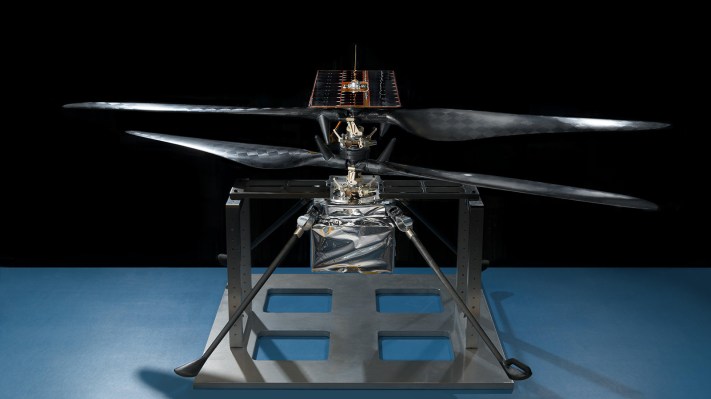NASA’s Mars Helicopter begins final testing phase before 2020 mission – TechCrunch - 2 minutes read

NASA’s Mars Helicopter will be a key experimental craft when it comes to shaping what humanity’s future exploring the Red Planet looks like – when it launches aboard NASA’s Mars 2020 mission, it’ll head to Mars with the aim of testing the viability of flying heavier-than-air vehicles through another world’s atmosphere. After passing its most recent volley of tests, it’s now moving into the final stages of preparation ahead of the target July 2020 Mars launch.
The 4-pound, autonomous test helicopter will be carried above the Mars 2020 rover during the flight to the planet, before being deployed once the rover sets down in Mars’ Jezero Crater, on the target date of February 18, 2021, after its multi-month trip from Earth. The helicopter has a camera on board, as well as a solar panel to provide power. This version doesn’t have any other kinds of sensors or scientific instruments on board, but that’s because its entire reason for being is to determine whether or not a Mars drone is even a viable proposition. Future iterations could gain sensors to help gather data that hasn’t been possible with purely ground-based rovers.
So far, the Mars Helicopter has been tested in high-vibration environments that simulate launch and landing conditions, extreme temperatures like those found on the surface of Mars, and electrical and mechanical system integrity testing. Now, it’s had its solar panel installed and the rotors are being spun up, so there’s another round of stress and integrity testing to be done to ensure it’s ready for the real thing.
NASA’s Mars 2020 mission will span at minimum one Mars year, which lasts 687 Earth days, and includes a newly designed rover that is around the size of compact car, but features upgraded wheels and also a new core sampling drill for harvesting rock and soil samples not on the surface of the planet.